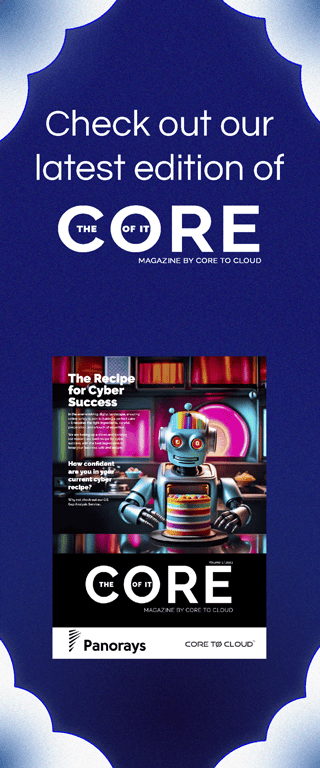How can your business use SaaS security applications to protect against similar threat actors?
Introduction
Threat actors like Midnight Blizzard are continually pushing the boundaries of conventional cybersecurity measures. This article dissects the intricacies of the recent Microsoft breach orchestrated by Midnight Blizzard, shedding light on the advanced tactics employed to compromise identities and exploit misconfigurations within SaaS applications and identity stores. It also highlights the use of SaaS security applications to help mitigate similar threats.
Summary of events
On January 19, 2024, Microsoft disclosed that it had been attacked by state-sponsored hackers from Russia. The hackers accessed senior management mailboxes, leaking sensitive data.
We explain the attack step-by-step and what businesses like yours can do to defend against similar attacks in the future.
The threat actor
- Midnight Blizzard: A state-sponsored Russian threat actor group, also known as Nobelium, CozyBear, and APT29
- Other Notable Midnight Blizzard breaches: Hewlett Packard Enterprise and SolarWinds
- Similar Threat Actors: Evil Corp, Lapsus$, BlackMatter, and Vice Society.
The realities
- Attack target: Microsoft’s Entra ID environment (Microsoft Entra ID is a cloud-based identity and access management (IAM) solution that provides users with a single sign-on experience regardless of whether their applications are cloud or on-premises-based).
- Strategies used: Password spraying (a technique where an attacker attempts to use the same password on multiple accounts before moving on to try another one), exploiting identities and SaaS misconfigurations.
- Consequences: The compromised Entra ID environment resulted in unauthorised access to the email accounts of Microsoft’s senior leadership team, security team, legal team, and others.
What’s unique about this breach?
- Employing stealth identity tactics that evade existing protections to compromise users.
- Manipulating misconfigurations in SaaS applications to gain access.
- Taking advantage of misconfigured identity settings in Entra ID to gain higher privileges.
Let us deconstruct the whole saga and see what lessons can be learned
In cybersecurity, the state-backed threat actor group Midnight Blizzard has become synonymous with sophisticated, highly orchestrated breaches that shake the foundations of renowned organisations. The latest victim in this saga is tech giant Microsoft. But this attack isn't an isolated incident; it's part of a pattern that underscores the evolving landscape of cyber threats.
The Midnight Blizzard Phenomenon
Midnight Blizzard isn't your run-of-the-mill threat actor. With a track record that includes breaches targeting entities like Hewlett Packard Enterprise and SolarWinds, they've cemented their status as a formidable adversary in the cybersecurity arena. What sets them apart is their reliance on identity compromise and exploitation of misconfigurations and permissions in Software as a Service (SaaS) applications and identity stores. This method allows them to execute breaches that conventional security measures struggle to counteract.
Let's unravel the Microsoft Breach
The Anatomy of the Attack
The attackers behind the Microsoft breach demonstrated a profound understanding of OAuth mechanics and exploit techniques, enabling them to circumvent detection controls effectively. By crafting malicious applications and manipulating OAuth permissions, they gained unfettered access to Office 365 Exchange mailboxes, facilitating the exfiltration of sensitive data with alarming ease.
Navigating Security Challenges
Identity-Centric Tactics
Midnight Blizzard's strategic targeting of identities underscores a critical challenge for cybersecurity professionals. Exploiting user credentials as a gateway to sensitive data poses a formidable obstacle, rendering traditional detection controls inadequate.
OAuth Application Abuse
The adept abuse of OAuth applications complicates detection efforts, allowing attackers to maintain prolonged persistence within targeted environments.
Misconfiguration Blind Spots
Identifying misconfigurations within Active Directory and SaaS environments remains daunting, often leaving defenders vulnerable to exploitation due to blind spots in their security posture.
Step-by-Step Breakdown
Pre-Breach Preparation
Before initiating the attack, the threat actor leveraged an OAuth app within Microsoft's test tenant, inadvertently granting it elevated permissions. This oversight highlights the challenge of managing sprawling application landscapes and the associated misconfigurations.
Initial Access Gambit
Through reconnaissance efforts, Midnight Blizzard targeted the test tenant, exploiting a weak, guessable password on the admin account lacking multi-factor authentication (MFA). Employing techniques like password spraying and residential proxies, the attacker gained unauthorised access, underscoring the limitations of traditional threat detection mechanisms.
Persistence Strategies
The attacker manipulated OAuth permissions to gain control over the admin account, effectively commandeering the OAuth app across all installations. This tactic mirrors techniques observed in previous attacks, emphasising the need for continuous monitoring to detect and thwart malicious changes promptly.
Privilege Escalation Manoeuvres
Exploiting TestApp's permissions, the attacker escalated privileges by creating a new user, likely an administrator. Subsequent deployment of additional malicious OAuth apps further entrenched their foothold, underscoring the importance of proactive measures to identify and mitigate configuration-based blind spots.
Lateral Movement and Data Compromise
Despite uncertainties regarding the number and origin of installed apps, evidence suggests the attacker's exploitation of TestApp facilitated unauthorised access to critical mailboxes within Microsoft's corporate hierarchy.
Conclusion: Lessons Learned and Our Expert's Advice on Paths Forward
The Microsoft Midnight Blizzard attack serves as a sobering reminder of the evolving threat landscape and the imperative for organisations to fortify their defences. By understanding the intricacies of such attacks and adopting a proactive approach to security, businesses can mitigate risks and safeguard their digital assets against sophisticated adversaries.
In conclusion, proactive threat detection, continuous monitoring, and robust security protocols are paramount in mitigating the risks posed by threat actors like Midnight Blizzard. By dissecting the attack methodology and embracing a comprehensive security posture, organisations can navigate the treacherous waters of cybersecurity with confidence and resilience.
















